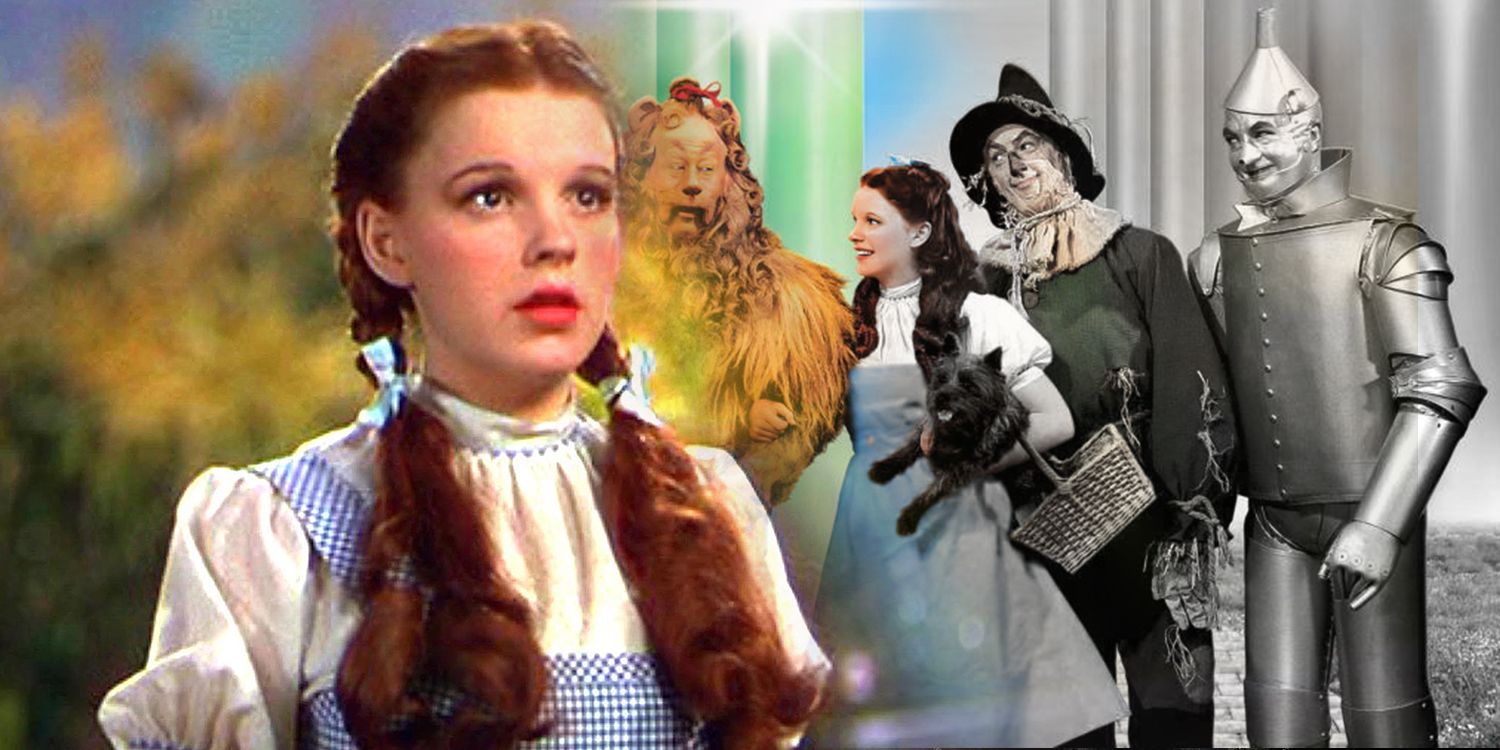The Wizard of Oz revolutionized cinema with its use of color, but it by no means pioneered it. The 1939 musical changed the history of filmmaking the moment Dorothy Gale (Judy Garland) opens the door to the amazing world of Technicolor after a tornado launches her house into the magical land of Oz. With her iconic pet dog Toto, they embark on a journey to find the Great Wizard of Oz (Frank Morgan) and plead him to send them back to Kansas, but the Wicked Witch of the West (Margaret Hamilton) starts pursuing them, seeking of revenge for the accidental death of her sister, the Wicked Witch of the East. Joined by a Scarecrow (Ray Bolger), a Tin Man (Jack Haley), and a Cowardly Lion (Bert Lahr), Dorothy follows the Yellow Brick Road toward the Emerald City and defeats the Witch before returning to Kansas.
Click the button below to start this article in quick view.
The movie instantly became a film and pop culture icon and was acclaimed for its excellent storytelling, heartfelt performances, innovative special effects, and musical score. But the element that helped the movie transcend to greatness was Technicolor, the most famous color process in Hollywood. With its highly saturated hues and completely natural representation of real-life color, the process marked the precedent for the mainstream use of color in every film that came afterward. Yet, as is the case with most innovations such as sound, special effects, and CGI, the film that popularized it is not the one that invented it.
Color films existed long before the idea for the iconic Hollywood adaptation of the Wizard of Oz book was even conceived. Around 190 motion pictures experimented with some sort of color techniques prior to the 1939 phenomenon, but unfortunately, many of them were lost. As far back as 1895, Thomas Edison was already exhibiting short hand-painted (frame by frame) non-narrative films for the Kinetoscope – a predecessor for movie projectors designed for individual viewing through a peephole window - the first and most famous of which is Annabelle’s Serpentine Dance. Even George Méliès’s historic 1902 A Trip to the Moon - essential to the future of VFX in movies - has a hand-colored print. However, the first motion picture projected in natural color (Kinemacolor) was A Visit to the Seaside, an eight-minute British short film that shows small snippets of people living their everyday lives, followed by the first feature-length silent drama using the same technique: The World, the Flesh, and the Devil. This means that the latter is actually the first non-documentary full-color feature film in history.
The reason why The Wizard of Oz is widely regarded as the first color movie is because of the effect it had on the industry. Dorothy’s step into the land of Oz represented the evolution from “Old Hollywood,” a sepia and monochromatic environment, into a new world full of lively color and happiness. In fact, this emblematic sequence was done in a very simple yet incredibly creative way: The film was already shot in Technicolor, but the set and a stand-in for Dorothy were painted in a sepia tone. The stand-in opens the door and reveals the vibrant land of Oz, prompting Judy Garland to enter in full color. The details in the costumes from The Wizard of Oz, along with its vivid sets and its graceful makeup work consequently blew everybody away in theaters.
While The Wizard of Oz wasn’t the first color film, it surely was the most influential. Every Wizard of Oz adaptation has failed to compare to the original, in great part because they don’t present any innovation that compares to the achievement of the 1939 film. Even by today’s standards, the land of Oz continues to be a breathtaking paradise thanks to the sense of childlike wonder that its color evokes.
